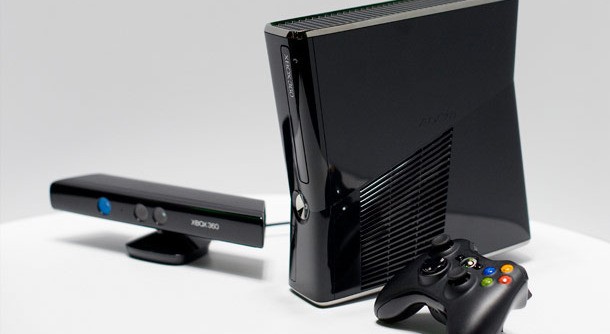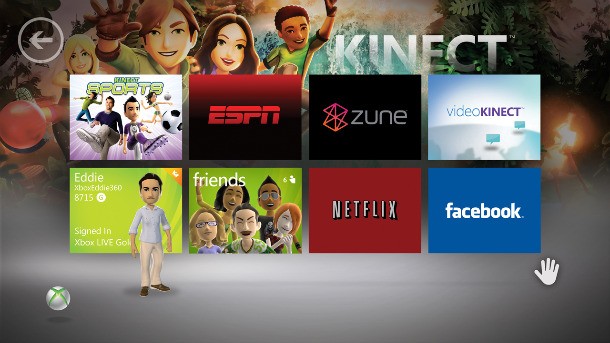Kinect Hardware Review: Wave Of The Future

When Microsoft first announced its motion-based interface two years ago, the company pitched a grandiose vision of a controller-free future in gaming. Along with a launch game lineup aimed largely toward the casual crowd (read: Wii owners), the team showcased innovative features such as scanning real life objects, interacting with a virtual boy named Milo, and the ability to play previously-released titles without a controller. While some of these ideas have been put on hold, Kinect still offers a number of solid features right out of the box.

A new means of navigation
Setting up a Kinect unit is incredibly easy – just connect the power supply’s USB cable into your 360, then plug the Kinect’s USB connector into a port branching from the power supply cable and you’re set (Slim versions of the console power Kinect directly removing an extra step). After a quick update prompted by hardware detection when you power up your 360, you’ll notice a few changes to the dashboard. Aside from the new Xbox Live update that features a sleeker interface, you’ll see a small square on the bottom right corner of the screen featuring a grayscale silhouette that accurately follows your movements. Contrary to some premature reports, you’re free to sit during controller-free menu navigation.
Kinect offers a separate dashboard for Kinect – compatible features displayed in a series of panels (see above). You can navigate these panels using your hands or via voice commands, both of which felt responsive. A quick hand wave causes Kinect to recognize your movement, revealing a hand cursor on screen that you can use to move among panels. Hovering over a panel causes a quick circular gauge to fill confirming your selection. Once you’re within Kinect-specific menus such as the Avatar Editor, you can hover over selections and slide your hand left or right to confirm your choices.
Voice commands are equally easy to use. Prior to any voice command you have to say “Xbox” and then follow the simple on-screen prompts. For instance, from the main dashboard you can say “Xbox” then “Kinect” to enter the Kinect-specific menu. From here, anything that you see on screen you can say and the mic will recognize your selections. If you want to check out your current achievements, simply say “Xbox” then “achievements” to enter the menu. Voice commands only work on the surface level of the Kinect menu, so once you’re in the Avatar Editor or achievements menus you’re limited to hand commands. The Kinect picked up my voice commands even at a mere whisper, so there’s no need to yell. If your Xbox 360 is set up in a language other than English, Kinect unfortunately automatically defaults to hand gestures. Hopefully support for voice commands in other languages will be implemented in a future patch.
Both hand and voice commands were very intuitive and responsive under different sound and lighting conditions, giving us a glimpse of what could very well become a standard option in future consoles for menu navigation. The technology is equally responsive to both voice commands and gestures when pausing, rewinding, and using other playback functions within ESPN and Zune. Kinect will not work, however, during standard DVD playback. Other neat features including Skype-style Video Kinect chat plus the other controller-free functions alone could make Kinect desirable for consumers interested in a new way to navigate. It’s just a matter of whether you’re willing to drop the $150.

But how does it game?
We can’t make one blanket statement as to how well Kinect works with games, as you must consider it on a case-by-case basis. While games like Dance Central and Kinect Adventures take full advantage of the motion detection technology and nail body tracking, others perform sloppily, making you feel like you have no control over the onscreen action.
One simple gameplay problem we noticed across the board is how you pause games. Several titles require you to hold out your left hand and wait for a circular gauge to fill before the game will pause, which doesn’t always work. A simple solution would be to automatically pause the game when you step away from the camera, which some games have thankfully implemented, but in other cases the action continues whether or not your presence is detected.
Kinect’s spatial requirement also needs to be considered. After the E3 demos, rumors spread that six feet of space is needed to play, and after spending some time with Kinect, many games require several feet of space to accurately scan your body, particularly for multiplayer. Unlike other motion control offerings that simply register arm movements, Kinect can scan your body whether you’re running, jumping, squatting, doing sit-ups, or lying down. You just need a substantial amount of room to do so. This could very well keep Kinect out of homes where space is at a premium. However, creative director Kudo Tsunoda assures that if you have room for an entire Rock Band setup, you'll have enough room for Kinect.
Final word
Kinect is an impressive piece of technology that has a high ceiling for growth. Even though the controller-free experience takes getting used to, it’s a bold step into the future worth taking a closer look at before brushing it off as just another gimmick.


Get the Game Informer Print Edition!
Explore your favorite games in premium print format, delivered to your door.
- 10 issues per year
- Only $4.80 per issue
- Full digital magazine archive access
- Since 1991









